>
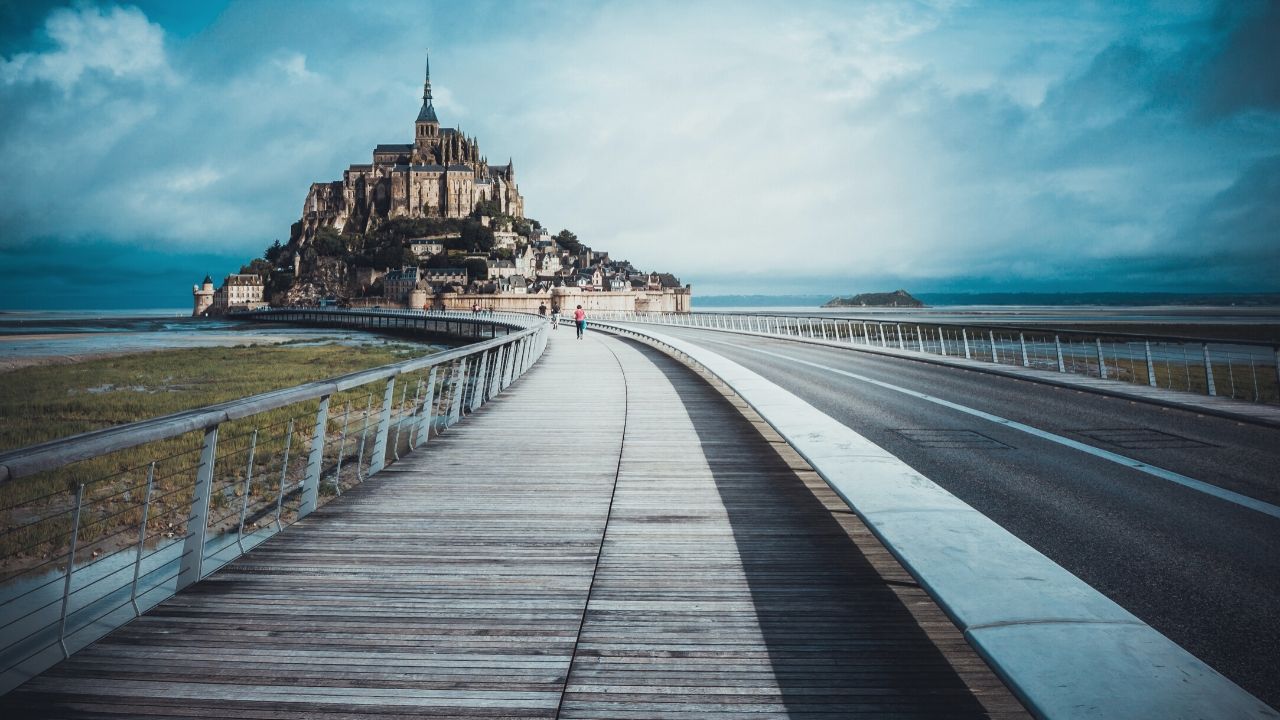
Join our upcoming Mauritania EXPEDITION
8 days, including Nouakchott, Iron Ore train and more.
Feb 8th to 15th
CLICK HERE TO LEARN MOREHow to get a visa, budget & costs, COVID-19 travel restrictions, cultural facts, moving around, how to find accommodation, top experiences and more. This is the most comprehensive and epic guide for traveling to Mauritania available on the internet.
If I had to say one reason to visit Mauritania, I would say that few countries in the world feel as raw.
Until the middle of the 20th century, when the French were ruling the country, up to 90% of all Mauritanians were still carrying out a nomadic, pastoralist lifestyle.
That wasn’t a long time ago.
Today, many from that generation are still alive, so their tribal system and traditional life are completely visible, not only in remote Sahara towns such as Tidjikja, but even the most cosmopolitan people of Nouakchott will wear traditional clothes and have a haima deep into the desert as their second residence.
Backpacking around Mauritania, traveling like the locals do, is the best way to witness the unspoiled Mauritanian lifestyle. If you are lucky, you will travel in a local pick-up loaded with camels, or goats in the worst-case scenario, and taking a break in a Bedouin camp where you will be offered some zrig (fermented yogurt) is almost guaranteed.
In Tidjikja, I once met a Mauritanian who had lived and worked in the USA for almost 10 years. He decided to return to his homeland and, with all the money he saved, he bought tens of camels.
Like in the old times, this is the best business – he said. He was one of the richest men in town now.
And then there is the desert. Mauritania is nearly twice the size of France, yet less than 5 million people live spread across those extensive arid plains, mostly composed of breathtaking desert landscapes, yet to be explored by the average traveler.
Mauritania was on the way of becoming a mass tourism destination (relatively-speaking) but unfortunate events related to the conflict with the Sahel put an end to the industry.
However, Mauritania is still there, awaiting to be discovered by the rawest adventurers.
Look for all the places to visit? Check my 2-week itinerary for Mauritania
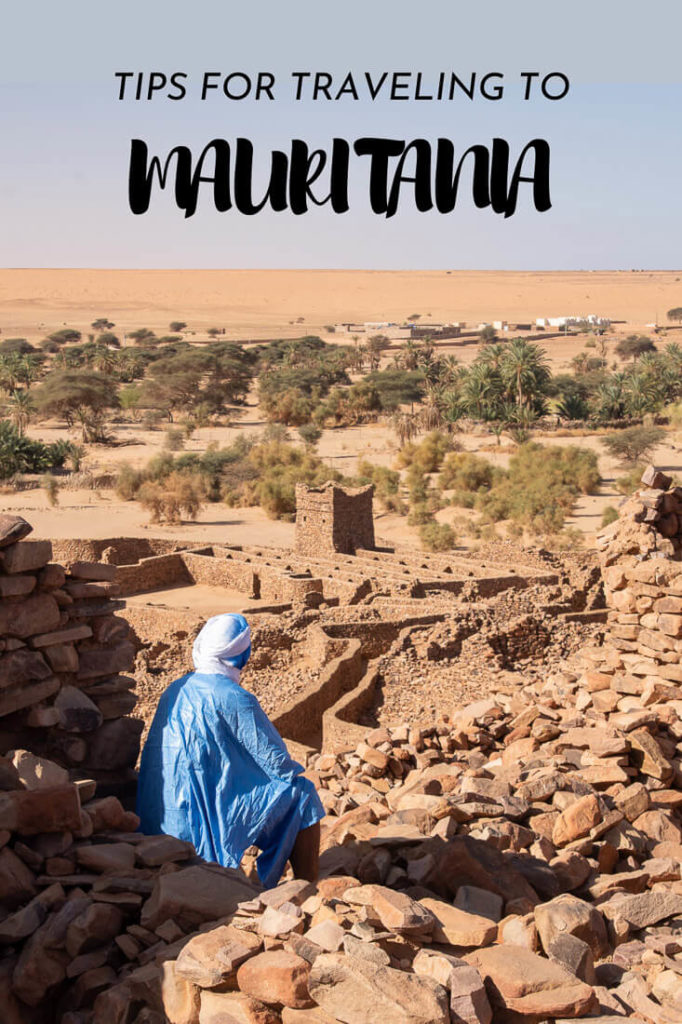
In this Mauritania travel guide you will find:
COVID-19 travel bans
Visa
Tours
Get in
Best time to visit
Travel insurance
Top experiences
Useful books
Cultural facts
Food
Is it safe
Solo female travel
Internet
Money, budget & costs
Accommodation
How to move around
More information
COVID-19 travel requirements for Mauritania
For entering Mauritania, you can either present a vaccination certificate or a negative PCR.
The PCR for leaving Mauritania isn’t mandatory anymore.
Travel Insurance for Mauritania with COVID-19 coverage
IATI Insurance is one of the few providers that offers full Coronavirus coverage, not only when it comes to treatment, but also cancellations costs in case you tested positive before departure. And not only this, but it’s one of the few insurance providers that gives coverage for traveling to Mauritania.Readers of Against the Compass can get an exclusive 5% discount.CLICK HERE TO GET 5% EXCLUSIVE DISCOUNT
How to get a tourist visa for Mauritania
Join our upcoming Mauritania EXPEDITION
8 days, including Nouakchott, Iron Ore train and more.
Feb 8th to 15th
CLICK HERE TO LEARN MORE
Today, practically all nationalities can get a visa on arrival in Mauritania, valid for 1 month.
The visa costs 55€ or 60USD, and it applies to both airports and land borders.
Some travelers have recently reported the immigration officer asking for a 20€ extra fee, claiming it was a necessary fee to pay for getting their passport back.
Obviously, this is a scam and, if you experience a similar issue, report it to the authorities right away.
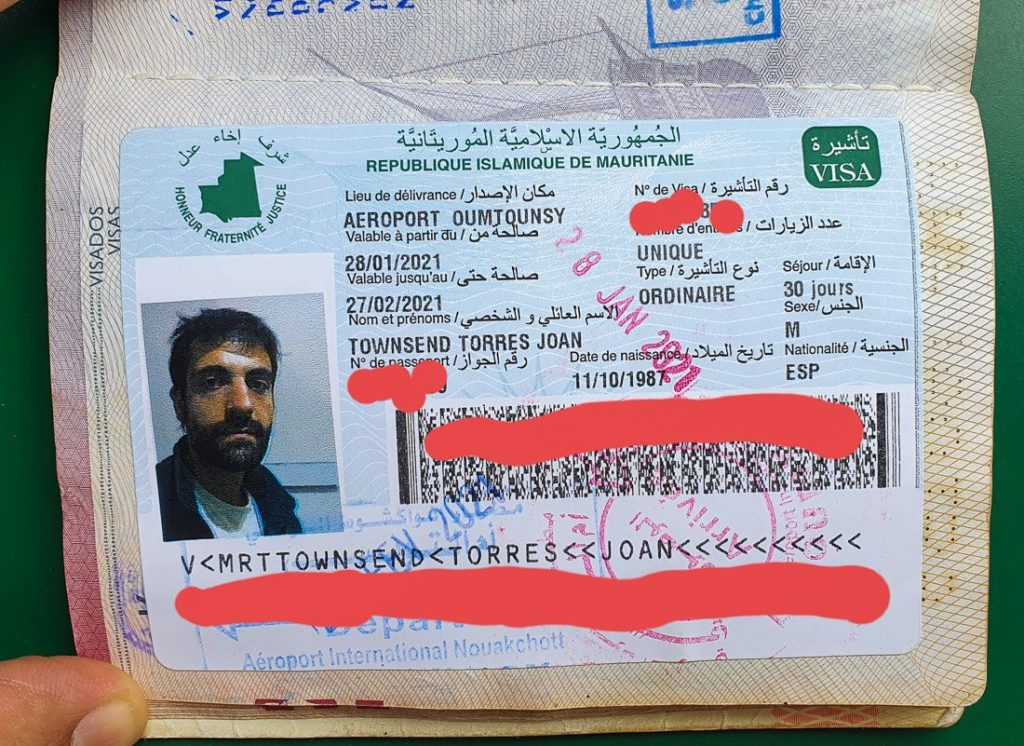
My visa for Mauritania
How to sign up for a tour in Mauritania
Traveling with a group and an expert local guide will make things much easier, and fun!Against the Compass always has scheduled expeditions to Mauritania: February 8th to 15th, 8 days. APPLY NOW8-day expeditions where among many other adventures, we will ride on top of the Iron Ore Train.
Learn more here about our upcoming Mauritania Tours
How to travel to Mauritania
Traveling to Mauritania by plane
Nouakchott and Nouadhibou have the most transited international airports, and I chose Nouakchott because flights were cheaper.
I flew to Nouakchott via Dakar (Senegal) with Air Senegal, but you can find some direct flights from Europe, especially from France and the Canary Islands (Spain).
Alternatively, the airport of Atar – capital of the Adrar region, where most touristic sites are – has direct flights from Paris and some other French cities.
Traveling to Mauritania overland
Mauritania shares a border with:
How to travel to Mauritania fromMorocco (Western Sahara) – An easy border to cross, the entry point being the closest Moroccan city to Nouadhibou. This border, however, is currently closed due to COVID-19. Here’s a border crossing reportHow to travel to Mauritania fromAlgeria – The Algeria-Mauritania border is currently closed to foreigners due to safety concerns.How to travel to Mauritania fromMali – After my trip to Mauritania, I went to Mali but I flew there, because the embassy told me the land border was temporarily closed due to COVID-19. In normal times, it is open but do check the latest security update, since most embassies claim the border areas are not entirely safe, even though all travelers I met who crossed them said it was just fine. Read my Mali travel guideHow to travel to Mauritania fromSenegal – A very transited border completely open to all travelers, Rosso being the most common entry point, also infamous for its numerous scams. Instead, experienced travelers recommend going through Diama
Best time to visit Mauritania
Spread across some of the driest plains in the Sahara, Mauritania might easily be one of the hottest countries on Earth, along with Sudan and Saudi Arabia, with overwhelmingly killing summers.
Personally, I can’t stand the heat, so my advice is to definitely avoid coming in the summer months, the best season for backpacking in Mauritania being from November to March.
I was backpacking in Mauritania there in the month of February and, during the day, the sun was already pretty harsh, with temperatures averaging 30-35ºC.
Nights and early mornings were kind of chilly though (15ºC), so do bring some small clothes, especially if you are planning to ride the Iron Ore train.

Overlooking the oasis of Terjit. This was early in the morning and as you can see, I was wearing a pretty warm sweater
Travel insurance for Mauritania
For Mauritania, get IATI Insurance:Covers travel in Mauritania (which is rare)One of the few providers with full COVID-19 coverageThey have loads of different plans for all types of travelers: from families to backpackersGood for long term trips (up to 1 year).Readers of this blog can get a 5% exclusive discountCLICK THROUGH THIS LINK TO GET 5% SPECIAL DISCOUNT
Top Experiences in Mauritania
Riding the Iron Ore train
Every single day of the year, a 2.5km long train departs from the remote Sahara town of Zouerat and travels 700km across the Sahara desert to the coastal city of Nouadhibou, transporting hundreds of tonnes of iron ore.
As hardcore as it sounds, travelers can get on top of the train and travel along the 18-hour journey.
This is one of the top reasons to visit Mauritania, and one of the best traveling experiences I have ever had.
Read here about the full experience.
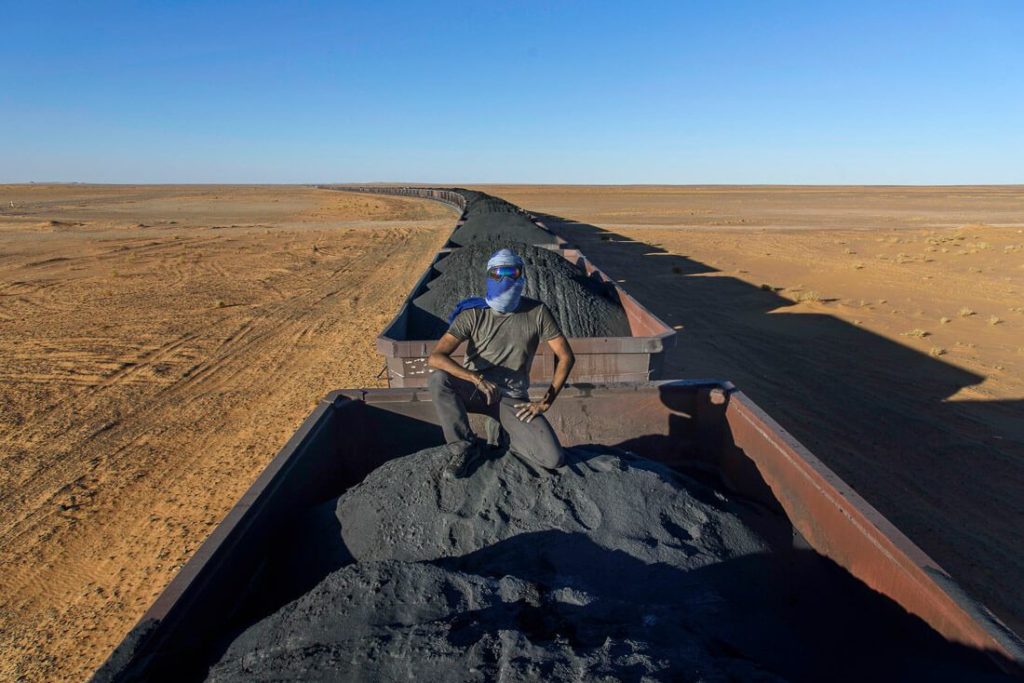
Riding the Iron Ore train was more than epic
Visiting the rawest Sahara villages
As I said in the introduction, Mauritania is a particularly raw country and visiting several villages deep in the Sahara feels like traveling back in time.
I strongly recommend Tidjikja.
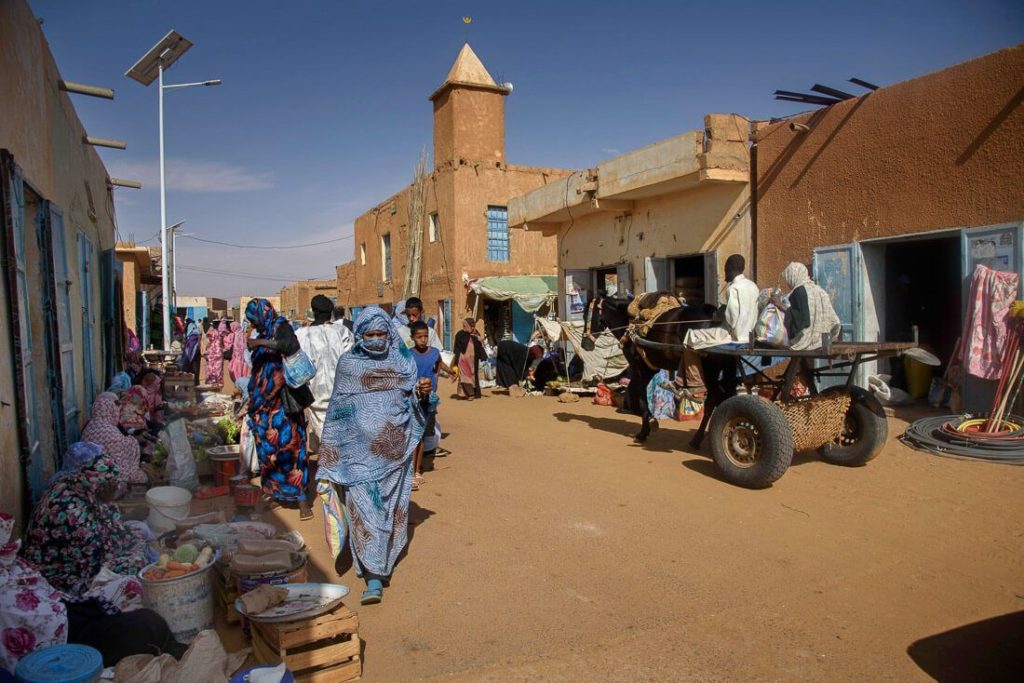
Daily life in Tidjikja
Seeing the largest concentrations of camels ever
From Oman to Sudan, hanging out with camels has become a vital part of my travels across the Middle East, but I think the camel market that takes place in the city of Nouakchott has the largest concentration of camels I have ever witnessed.
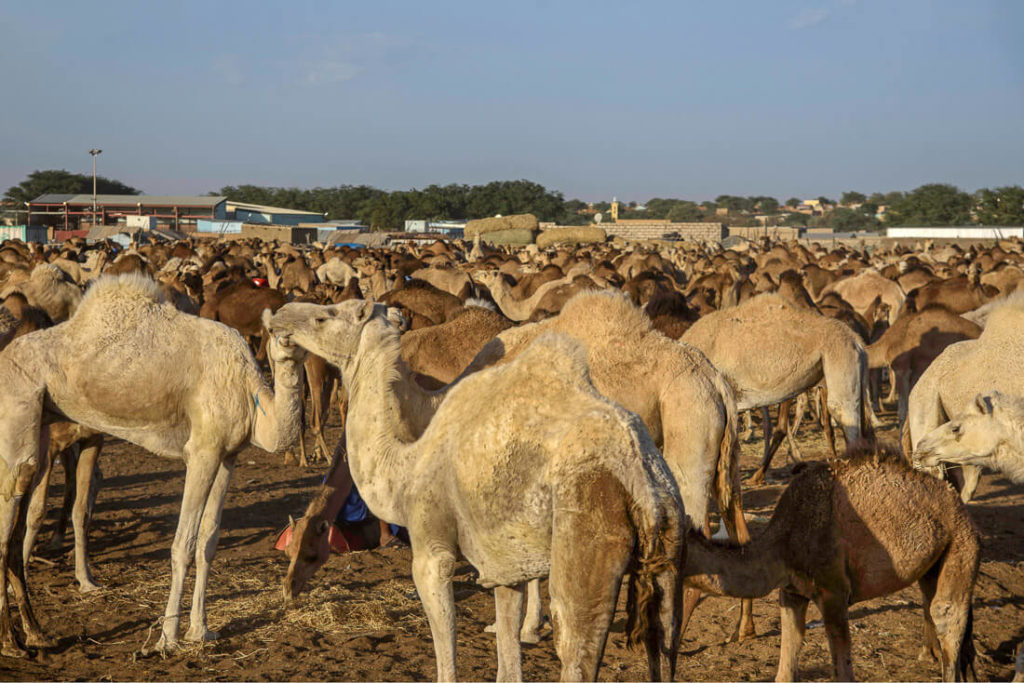
Cameeeeels

Exploring the vastest Sahara
Mauritania is a far-flung land home to jaw-dropping desert scenarios that only a small bunch of travelers have had the chance to discover.
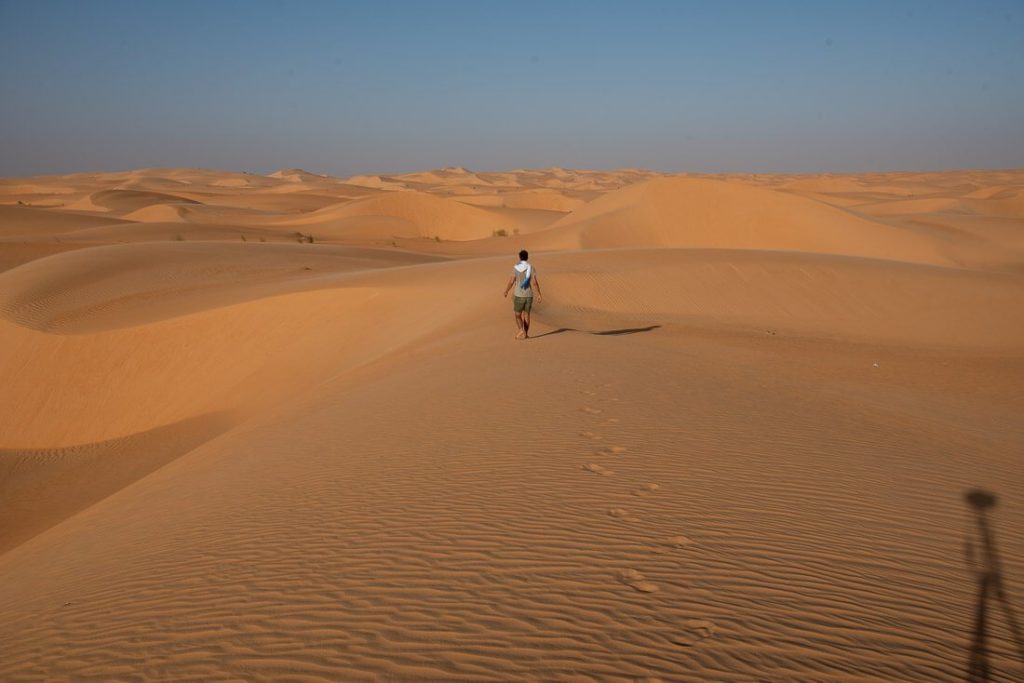
The dunes near Chinguetti
Useful books for planning your trip to in Mauritania
West Africa travel guide by Lonely Planet
A useful book for West Africa overlanders – with a chapter fully dedicated to Mauritania – but bear in mind that it contains travel guides to 18 different countries, so consider it a small introduction to the region.CLICK HERE TO CHECK PRICES
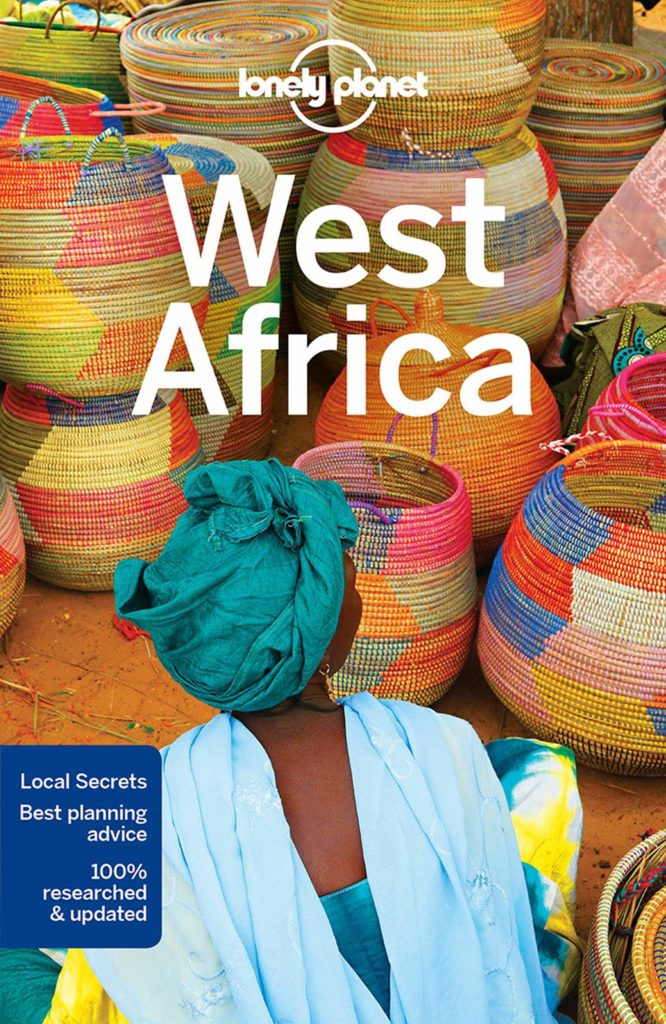
The desert and the drum (Mbarfek Ould Beyrouk)
This is the first Mauritanian novel to ever be translated into English and I think it’s the only one so far, that’s why I bought it.The story is about a Bedouin girl who falls in love with a stranger city guy and all the consequences after her tribe found out.To be very honest, the book is a bit cheesy but what I liked that it gives you many insights into how tribal people live in Mauritania.CLICK HERE TO CHECK PRICES
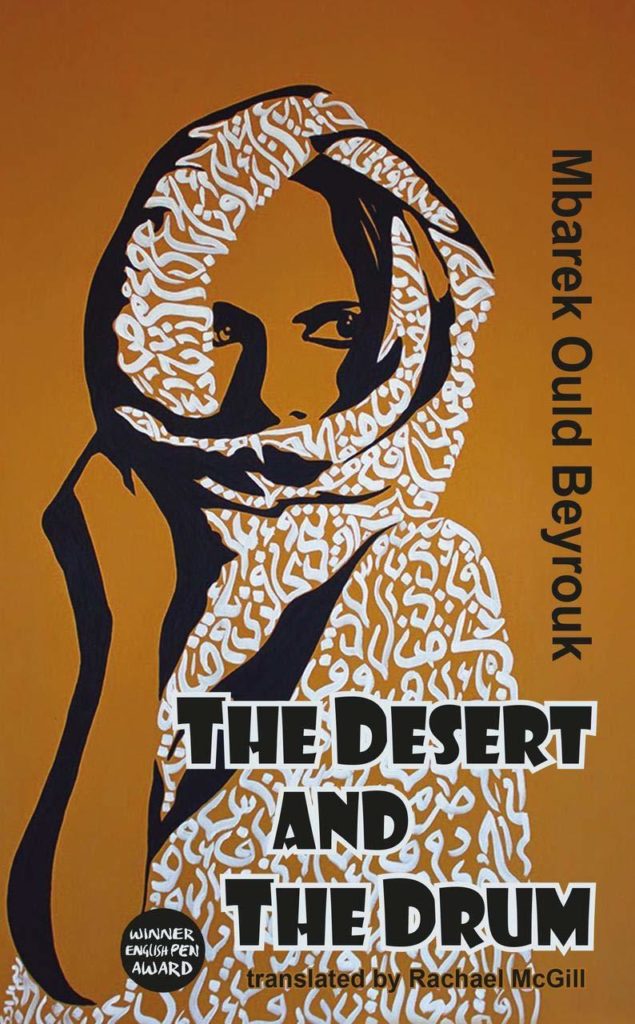
Facts about Mauritania, its culture, people and religion
Mauritania is where Maghreb meets Africa
Nestled between Morocco and Senegal, Mauritania is a chaotic mix of both Maghrebis and sub-Saharan Africans, visible not only in people’s facial features but also in their food and the daily life of many Mauritanians.
You might also like: Libya travel guide
Generally speaking, Mauritanians classify their society into 3 main groups:
White Moors (Beidane) – The dominant ethnic group, which refers to those Maghrebi-looking people who have lighter skin, and mostly have Arab or Berber descent.Black Moors (Haratin) – Descendants of black slaves who lived in the Maghreb.Sub-Saharan ethnic groups – Mauritanians who belong to African ethnicities from different parts of West Africa.Something you need to know about Mauritania is that there is a pretty tangible structural racism, visible in all aspects of life. Mauritanians have a particularly traditional society, many of them either have a tribal mindset or live under a tribal system, which is why black ethnic groups are often treated as second-class citizens, have lower salaries and pursue low-qualified jobs, from house servants to fishermen. ‘’You will never see a White Moor cleaning houses’’ – some locals told me, as if they always felt the need to acknowledge to me they are the dominant group. I didn’t like it.

White Moors, Ouadane
Hassaniya is the local language
Hassaniya, which is a variety of Maghrebi Arabic, is the main language in Mauritania, and in the Western Sahara as well.
Nevertheless, languages such Pulaar, Soninke and Wolof are also recognized as national languages, and they are spoken by black African Mauritanians, depending on their ethnicity.
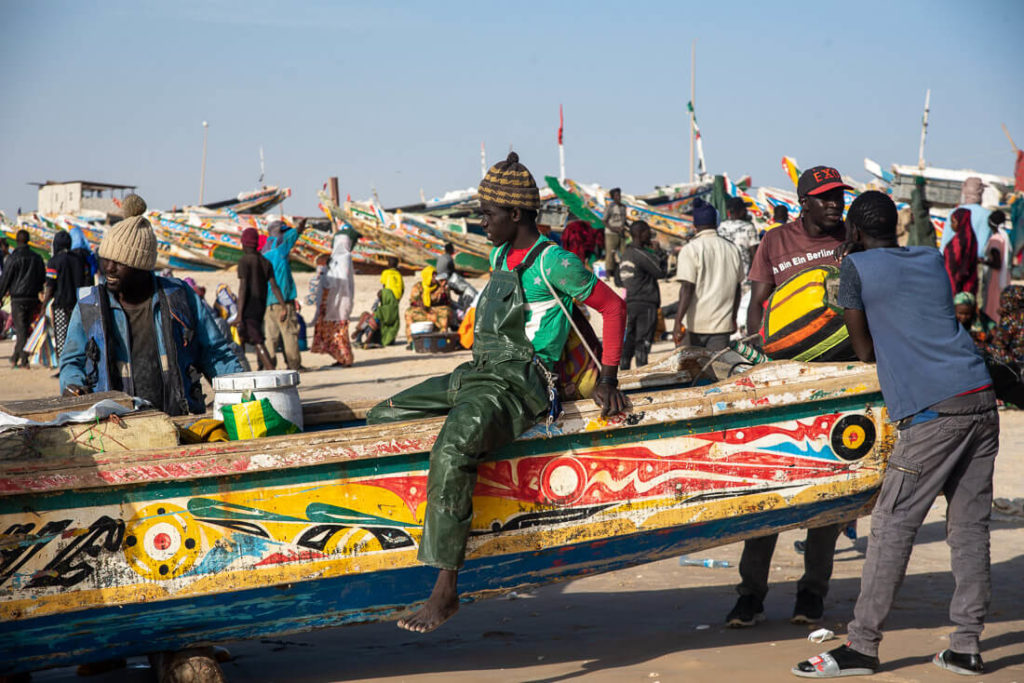
Fishermen are always from sub-Saharian Africa
It used to be a French colony, so French is the way to go, but English is not that useful
As a former French Colony (from the late 19th century to 1960), French is widely used in Mauritania, especially in Nouakchott and Nouadhibou.
Outside of these two cities, however, only highly educated people or people working in hospitality speak fluent French.
English, nevertheless, was hardly spoken by anyone – not even in touristic auberges – and that was a big downside for me, since my French is good enough to make myself understood but I can’t have deep conversations.
It’s a Muslim country
99.9% of the population in Mauritania are Sunni Muslims, most of them being highly devoted to Islam.
You also need to know that there is no freedom of religion and that atheism is punished with the death sentence.

Chinguetti Mosque, the most important mosque in Mauritania (13th century), whose minaret is said to be the second oldest in continuous use anywhere in the Islamic world
Most people wear traditional clothes
What I loved about Mauritania is that everybody wears traditional clothes, even young people from the capital.
Typically, men wear a wide blue dress named daraa and cover their head with a turban named shesh, which basically means scarf in Arabic.
I did buy the full set in a local market in Nouakchott and didn’t pay more than 6€, but I had to bargain.
Women dress in a traditional colorful dress named melhafa.
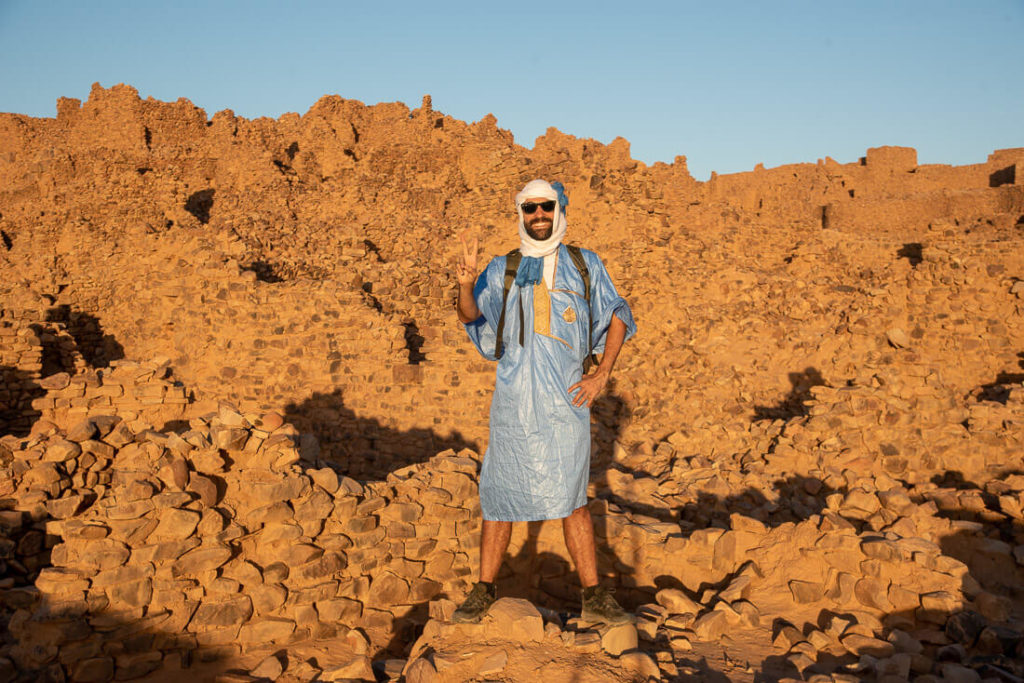
Rocking my ”daraa” somewhere in Ouadane, Mauritania
Leblouh is still a big deal in Mauritania
Leblouh refers to the tradition of force-feeding girls when they are very young, typically in those places where obesity is directly related to beauty, so they can get married earlier.
This old practice has been used in many African countries but in Mauritania, it’s still a very big thing. A few young local men talked to me about this particular topic, saying it’s a widely used habit. You will quickly notice that most Mauritanian women are curvy.
Slavery in Mauritania
You probably heard of Mauritania being home to the last slavery stronghold in the world and, to some extent, it can be true. Slavery in Mauritania was only abolished in 1981, but it didn’t become an actual criminal offense until 2007. According to international media, however, slavery still exists. Slaves in Mauritania were always black Africans serving their White Moor masters. When you travel in the north of Mauritania, you are likely to see Bedouin families with black servants. Those servants were born and raised among those Bedouins but are treated as second-class family members, whose main goal in life is being their servants. Foreign media will tell you that those are actual slaves, while local Mauritanians claim those people are free to leave but they don’t because they are uneducated, that’s the only life they know and, basically, they are OK with it. Make your own judgment.
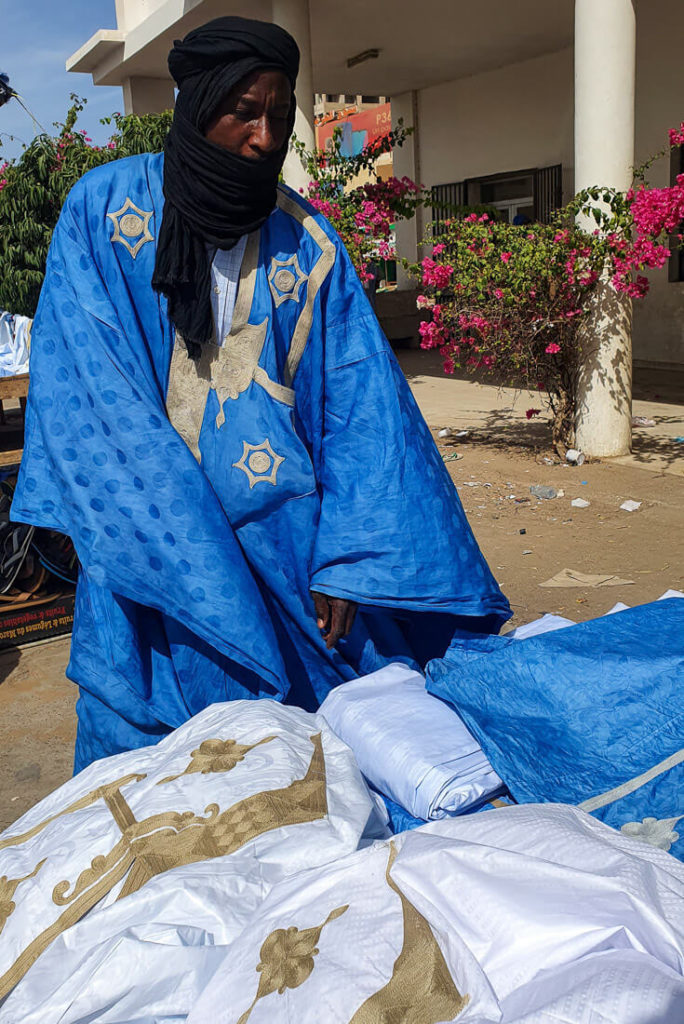
Looking for a ”daraa” in the local market of Nouakchott
Food in Mauritania
If I ever travel back to Mauritania, food won’t probably be the reason.
Mauritania is mostly composed of arid plains and it’s a traditionally nomadic society, so they never had either the ingredients or the motivation to have an elaborate cuisine.
Nonetheless, since Mauritania is sort of a cultural hub with people from Maghreb and sub-Saharan Africa, you can find some food variety, but you need to look for it.
One thing that surprised me about backpacking in Mauritania is that it can be difficult to find food, cooked food I mean.
In many towns and villages, there weren’t any restaurants, and even in a relatively sized-town like Tidjikja, there was only one, and the day I went there, they said I had to order 3 to 4 hours in advance. On the next day, I did go there early in the morning, but it never opened.
Don’t panic, however. Usually, most auberges have a daily dish.
Things you are likely to eat in your trip to Mauritania:
Macaroni – Regular, greasy pasta with vegetables and meat. That’s what they fed me most days.
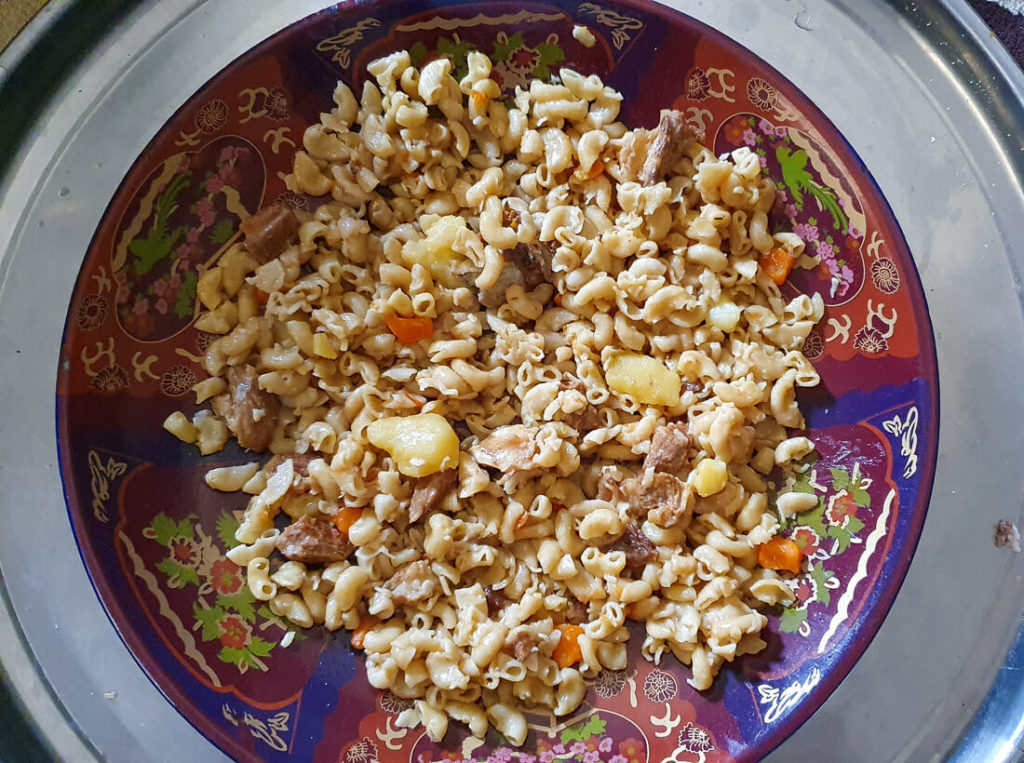
Maccaroni
Thieboudienne – That was my favorite. It’s a traditional Senegalese dish consisting of a brown, thin rice, fish and spices.
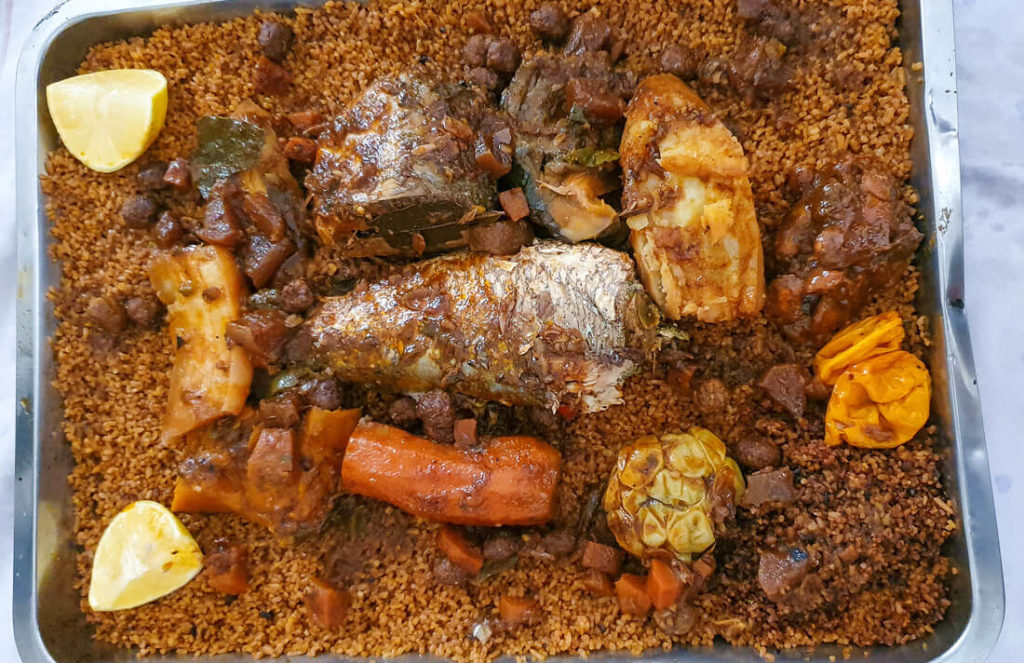
Thieboudienne is a Senegalese dish but in Mauritania it’s as traditional
Moroccan cous-cous – I say Moroccan because that’s what they call it. Just regular cous-cous but nothing comparable to the ones you find in Tunisia or Morocco.
Camel meat – Many of the above dishes will often come with camel meat.
Tea culture in Mauritania
Tea is an essential part of Mauritanian life, and a symbol of hospitality.
They have it in a similar way to neighbouring Morocco but the ritual takes longer and they serve it with a lot of foam, like in the Western Sahara.
Their tea is good, heavily concentrated but they take so much time preparing it, averaging 20-25 minutes, if doing it right.
During the first few days of your Mauritania trip, it’s a pretty cool process to observe but then, when you bump into random people who want to invite you for tea, expect to waste 40 or 45 minutes of your time. Because of this, once I missed the sunset and got very upset.
Alcohol in Mauritania
Mauritania is a dry country and alcohol consumption is strictly forbidden.
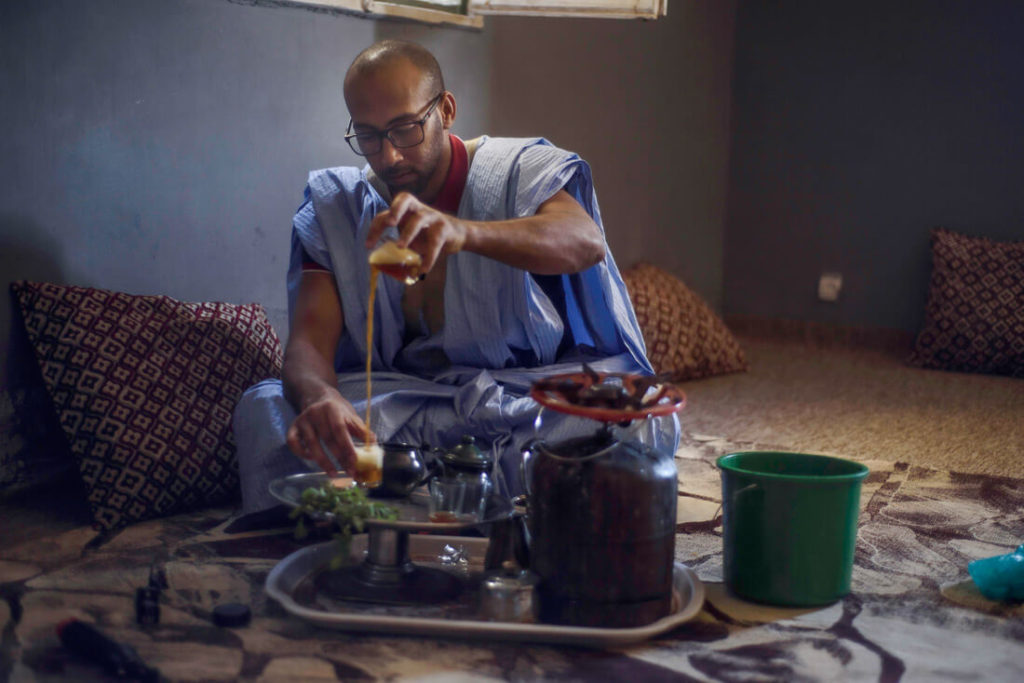
Preparing tea, somewhere in Nouakchott
Is it safe to travel to Mauritania?
For a more comprehensive analysis, read my Mauritania safety guide
If you look into the FCDO advice, you will see that all Mauritania is a big NO-GO zone.

Mauritania travel advisory, according to the FCDO
Mauritania belongs to the Sahel, a region that spreads across Mauritania, Mali, Niger and Chad – among others – and one of the most turbulent regions on Earth, today home to rebel groups like Al Qaeda Maghreb (AQIM) and many other similar organizations.
The truth is that Mauritania has actually suffered from unfortunate incidents that ended with the premature tourism industry, but it’s also true that, thanks to an outstanding level of security, the situation in Mauritania has remained stable for many years.
Nowadays, Mauritania is a safe destination to travel.
There are some areas near the border with Mali and Algeria where security can be an issue but that’s too remote to go anyways.
Mauritania travel tip: Bring 20-30 copies of your visa & passport
When you are traveling around Mauritania, you will go through endless checkpoints in which all foreigners must register for their own security. In those checkpoints, the gendarmerie or military will ask you for a fiche, a document containing a copy of your passport and visa. If you don’t have one, they will make you get off the car and write down all your information, wasting you a lot of time. Therefore, do bring plenty of copies (30, at least). I recommend printing one single page with a copy of your visa and passport, along with your local phone number, if any.
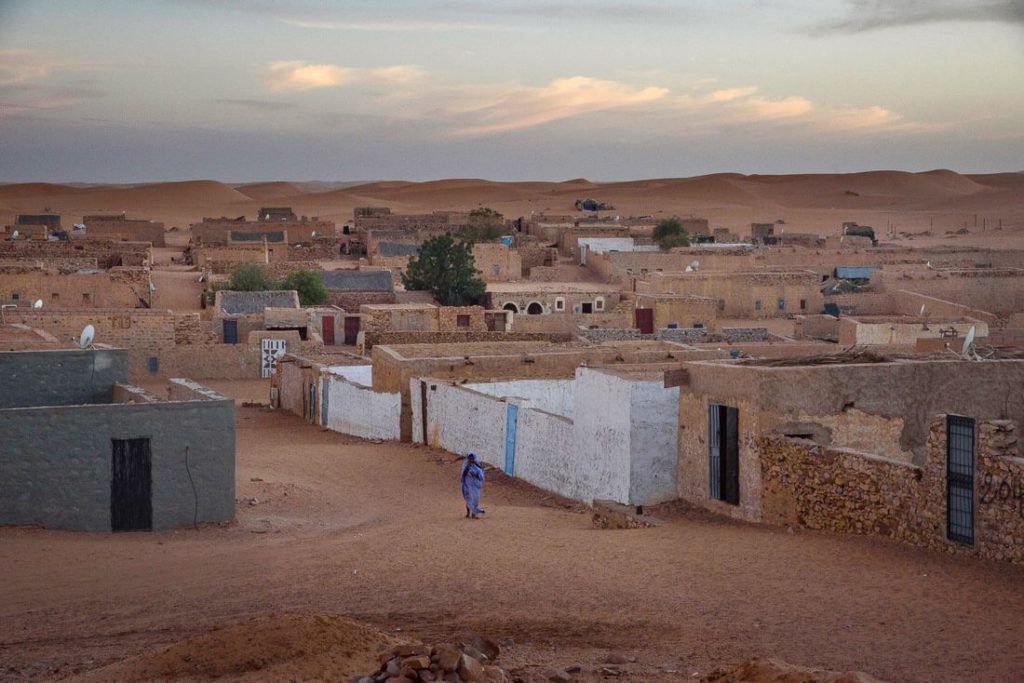
Chinguetti is limited by a sea of dunes
Solo female travel in Mauritania
Mauritania is a patriarchal, conservative, Muslim country, so a woman’s experience will differ greatly from a man’s.
However, I haven’t met yet a female traveler who has been backpacking in Mauritania by herself, so I can’t give very specific information about it. If you have visited Mauritania as a solo woman and would like to tell us about your experience, kindly let me know.
Based on female experiences in other countries, nonetheless, here are a few observations:
Do expect some occasional harassment, but no more than popular destinations, such as Egypt.If you don’t have a lot of solo travel experience in Muslim countries, it is recommended to first travel to more touristic countries such as Jordan or MoroccoTraveling in Mauritania as a solo female should not be very different from traveling in Pakistan or Sudan
Internet and connectivity in Mauritania
Generally, internet is pretty bad in Mauritania, both Wi-Fi and internet data, even in Nouakchott.
Outside of Nouakchott and Nouadhibou I never found Wi-Fi.
Internet data worked OK in Atar, Tidjikja and Zouerat.
In Ouadane and Terjit, it was nonexistent. Chinguetti was fine to send emails and simple browsing.
If you need to download anything, do it in your home country.
I bought a Mauritel SIM card and you can buy extra data and calls in any regular grocery store across the country.
Get a VPN for traveling in Mauritania
You should always use a VPN when you travel, especially when you connect to public Wi-Fi networks.
Your connection will be much safer.
Moreover, you will be able to access content which is typically censored in Mauritania.
I recommend ExpressVPN – Extremely easy to use, fast and cheap.
Get ExpressVPNIf you want to learn more about VPN, check: Why you need a VPN for traveling.
Money, budget and costs
In Mauritania, they use the Mauritanian Ouguiya (MRU) and, approximately:
1€ = 43MRU
TTENTION!
In 2018, Mauritania replaced their currency by introducing a new Ouguiya with the same value divided by 10.
The problem is that the vast majority of people still think in the old currency, and it’s so easy to get confused. Occasionally, it’s difficult to guess in which currency they are talking about, especially because sometimes it looks either too cheap or too expensive, but Mauritania is a very cheap country, so always go for the cheaper option

Credit cards and ATMs
You will hardly find a place where you can pay by card. Do always have cash.
Société Generale is the most popular bank among foreigners for withdrawing money. I think it’s the only one that accepts international credit cards. You can find quite a few branches in both Nouakchott and Nouadhibou.
Outside of these two main cities, ATMs are scarce, so remember to bring enough cash.
Exchanging money
There are several exchange offices in the city center (Capital area). Alternatively, I exchanged in many auberges at an acceptable rate.
How much does it cost to travel in Mauritania?
Prices of the most typical things:
Full meal in a local place: 150MRUFull meal in fancier places: from 250-350MRUMeals in auberges: 200-300MRUFast food (sandwich): 70MRUCoffee in a local place: 40MRUCoffee in a fancy café: 80MRUBottle of water (75cl): 10MRULocal shared taxi within Nouakchott: 10MRUBus from Nouakchott to Tidjikja: 700MRULocal car from Tidjikja to Atar: 700MRULocal car from Atar to Chinguetti: 200MRU
Backpacking in Mauritania – Average daily budget
35€ a day
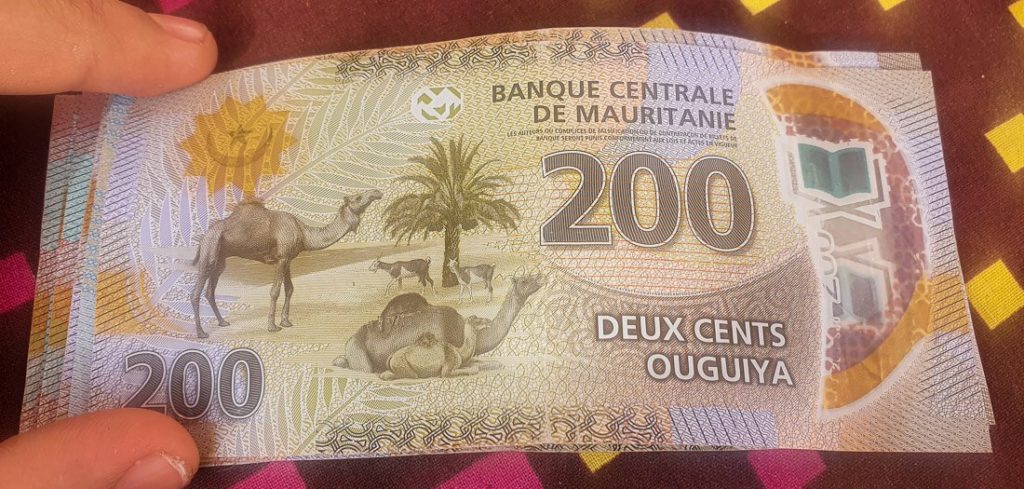
Mauritanian notes have camels in them
How to find accommodation in Mauritania
In Mauritania, there are many accommodation options but, outside of the main cities, they mostly consist of basic campsites and auberges. They also come with a large variety of nonsensical prices. Once I paid 20€ for a creepy hut and the next day I paid 4€ for a similar quality room.
In Nouakchott, if you are a budget traveler, I strongly recommend Triskell Hostel, run by Sebastien, a French man who has been living in Mauritania for a long time.
Moreover, in Nouakchott, you can find hotels suitable for any wallet.
CLICK HERE TO FIND THE BEST HOTELS IN NOUAKCHOTT
Outside of Nouakchott, you will rarely find anything on the internet.
Below is a list of some of the places I stayed at:
Tidjikja –Auberge Caravane du Desert – Very basic rooms with private bathroom. 1,000MRU for a double roomTerjit –Chez Jamel – A tended camp. It’s pretty basic but it’s well taken care of. 300MRU for a tentOuadane – Auberge Vasque – This is the best place I stayed in Mauritania. Clean, the only auberge with hot water and a comfortable mattress. 1,200MRU for a double roomChinguetti – Auberge Zarga – Extremely basic and very dirty but the owner seems to be one of the few people in town who is used to dealing with travelers. 150MRU for a dorm-bed
Zouerat – Tiris Hotel – Basic hotel and expensive but not many options in Zouerat. 1,500MRU for a double roomNouadhibou –Hotel Esma – A proper, modern hotel. Perfect for those who arrive in Nouadhibou after riding the Iron Ore Train2,000MRU for a double room with breakfastFor a more detailed explanation of all these places, don’t forget to check my Mauritania travel itinerary
How to move around Mauritania
Traveling around Mauritania with a rented vehicle
If I ever visit Mauritania again, I will rent a 4×4. Actually, one of the things I regret about visiting Mauritania is that I didn’t get deep into the desert. I mean, I did visit remote Sahara towns, but didn’t get far away from civilization and main roads.
You can easily rent a car in Nouakchott, or through your preferred guide/tour operator.
By the way, only experienced drivers should attempt exploring the depths of the Mauritanian Sahara.
Traveling around Mauritania by public transportation
Before traveling to Mauritania, I thought that moving between Sahara towns would be challenging but it turns out that all you need is a shit load of patience.
OMG, you can’t imagine how many hours I wasted waiting for a bus/car to leave.
Typically, local 4×4 pick-ups is the preferred way of transportation for moving between Sahara towns. They fit up to 8 people and leave once they are full, but when a town is too remote, it may take a few days to fill it up.
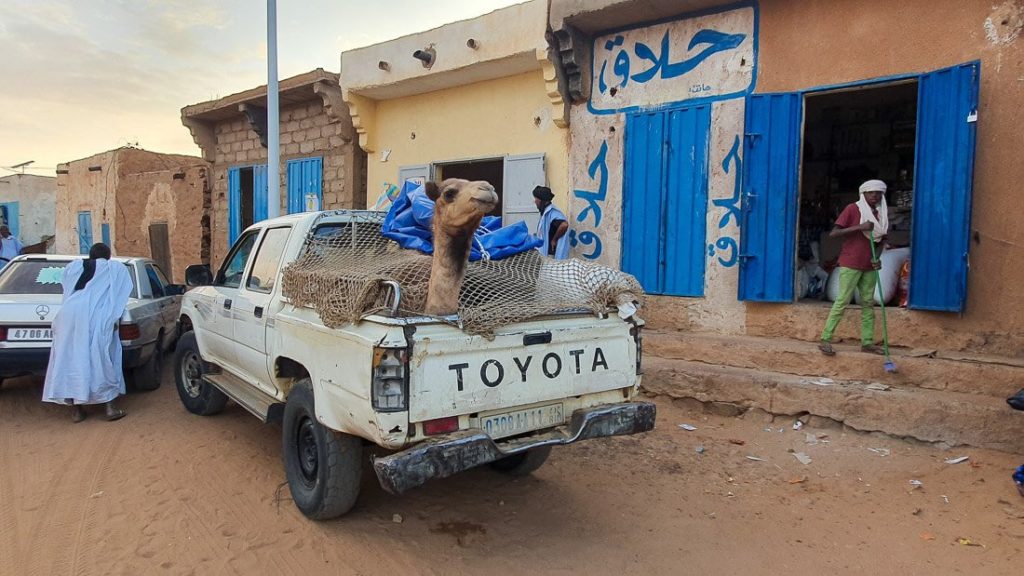
A local pick-up, or shared taxi, loaded with a camel
I actually wanted to go to Tichit from Tidjikja. Upon my arrival in Tidjikja, the first thing I did was try to arrange the local pick-up to take me there. The car wasn’t full yet, so I waited for one more day but nothing, they still didn’t have enough passengers:
Maybe tomorrow, or maybe not – they said.
In the hypothetical case I managed to get to Tichit, there could also be the possibility that I had to wait there for 3-4 extra days to come back to Tidjikja, which would imply spending more than a week in a very remote area with not much to do and where nobody spoke English, so I passed.
This is how I moved between towns:
Nouakchott to Tidjikja – Local buses leave early in the morning from Carrefour Madrid. It’s a 12-hour journey.Tidjikja to Terjit – Local pick-ups leave almost daily, but you need to arrange it on the day before. It’s an epic ride over sand dunes. 10-hour journey.Terjit to Atar – A local pick-up leaves early in the morning but I managed to hitch a ride after waiting for more than 2 hours.Atar to Chinguetti – A few pick-ups run daily. Easy.Chinguetti to Ouadane – First, you need to take a private taxi to the Ouadane intersection and wait there for a car to pass by. The intersection is literally in the middle of the desert, with no internet service and 30km from the nearest civilization. I waited for like 3 hours.Ouadane to Zouerat – A very long ride. First, you must arrange a local pick-up that will take you to Atar, which typically leaves at 7am. Once in Atar, I had to wait for about 5 hours for a bus to depart to Zouérat.
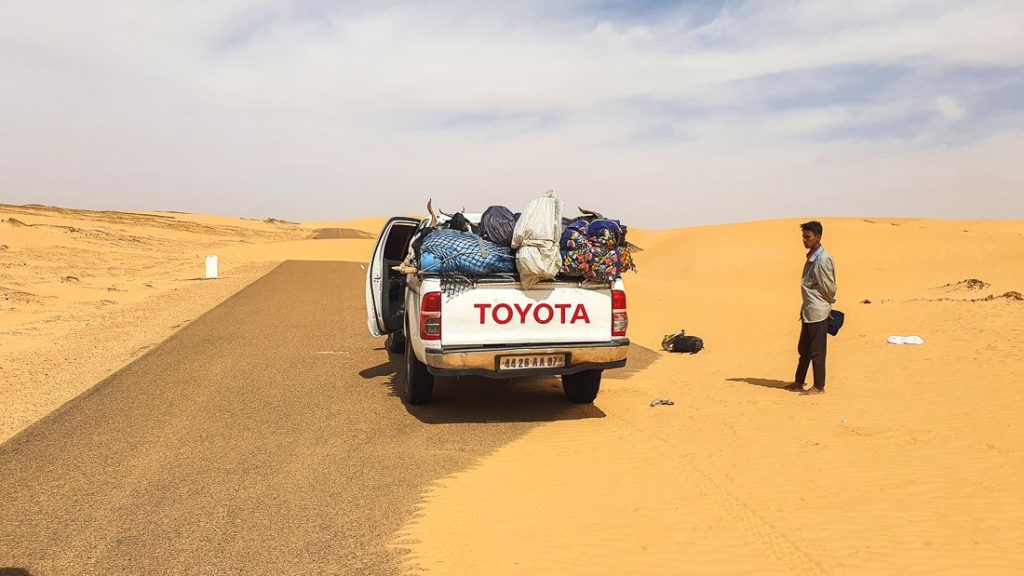
More often than not, that sand has literally swallowed the road
More information for traveling in Mauritania
ll guides and articles for traveling in Mauritania destinationTravel Guide to NouakchottIron Ore Train Guide in MauritaniaIs Mauritania Safe?Mauritania Itinerary
Travel guides to other countries in Africa
Ethiopia Travel GuideEritrea Travel GuideSomaliland Travel GuideTravel Guide to SudanTravel Guide to EgyptLibya Travel GuideMali Travel GuideTunisia Travel Guide
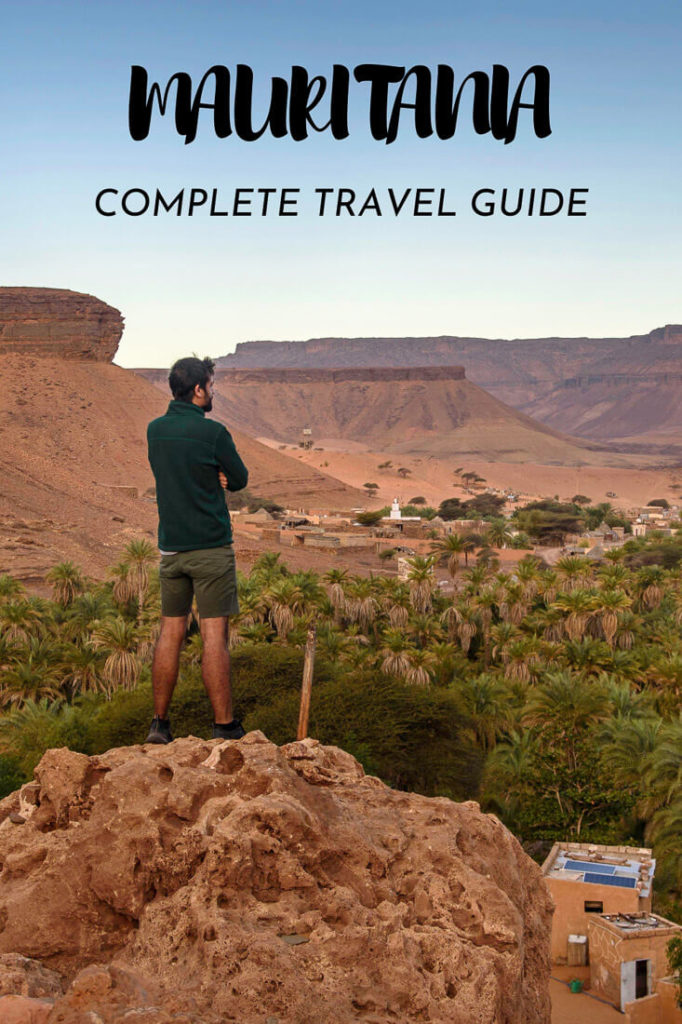
-----------------------------
By: Joan Torres
Title: Tips and how to travel to Mauritania in 2022
Sourced From: againstthecompass.com/en/travel-mauritania/
Published Date: Sun, 23 Oct 2022 04:19:00 +0000
Read More
 Privacy PolicyTerms And Conditions
Privacy PolicyTerms And Conditions
